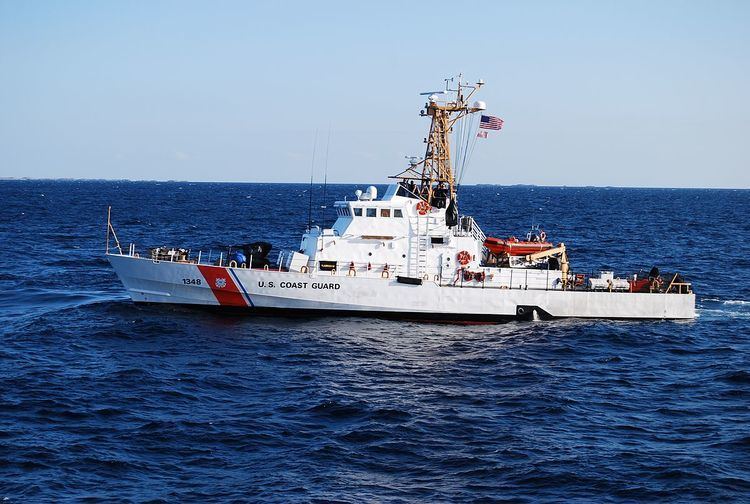Name Island class Active 37 | Completed 49 Displacement 168 tons | |
 | ||
Operators | ||
The Island-class patrol boat is a class of cutters of the United States Coast Guard. 49 cutters of the class were built, of which 37 remain in commission. Their hull numbers are WPB-1301 through WPB-1349.
Contents
Overview
The 110 ft (34 m) Island-class patrol boats are a U.S. Coast Guard modification of a highly successful British-designed patrol boat. With excellent range and seakeeping capabilities, the Island class, all named after U.S. islands, replaced the older 95 ft (29 m) Cape-class cutters. These cutters are equipped with advanced electronics and navigation equipment and are used in support of the Coast Guard's maritime homeland security, migrant interdiction, fisheries Enforcement, and search and rescue missions. The 58 ordered Sentinel-class cutters, selected under the Fast Response Cutter (FRC) program, are slated to replace the Island class.
Conversion problems
As built, these vessels were all 110 feet (34 m) in length. In 2002 as part of the Integrated Deepwater System Program, the Coast Guard began refitting some of these vessels, adding 13 feet (4.0 m) to the stern to make room for a high-speed stern launching ramp, and replacing the superstructure so that these vessels had enough room to accommodate mixed gender crews. The refit added about 15 tons to the vessel's displacement, and reduced its maximum speed by approximately one knot. The eight cutters being modified were the USCGC Matagorda (WPB-1303), USCGC Attu (WPB-1317), USCGC Metompkin (WPB-1325), USCGC Padre (WPB-1328), USCGC Manitou (WPB-1302), USCGC Monhegan (WPB-1305), USCGC Nunivak (WPB-1306) and the USCGC Vashon (WPB-1308).
In 2005, then-Coast Guard Commandant Admiral Thomas H. Collins made the decision to stop the contractor's conversion at eight hulls when sea trials revealed intractable structural flaws.
In August 2006, a Lockheed Martin engineer went public with allegations that the company and the Coast Guard were ignoring serious security flaws in the refitting project, and that they were likely to repeat the same mistakes on similar projects. The flaws included blind spots in watch cameras, FLIR equipment not suitable for operating under extreme temperatures, and the use of non-shielded cables in secure communications systems, a violation of TEMPEST standards.
In late November 2006 all eight of the 123 ft (37 m) WPBs were taken out of service due to debilitating problems with their lengthened hulls - all eight hulls were cracking when driven at high speed in heavy seas. These as well as other issues - such as C4ISR problems - drove the program $60 million over budget, triple the original bid for the eight boats converted. The 41 unmodified 110's are now being pressed harder to take up the slack. The eight modified were moved to the United States Coast Guard Yard and moored in Arundel Cove.
